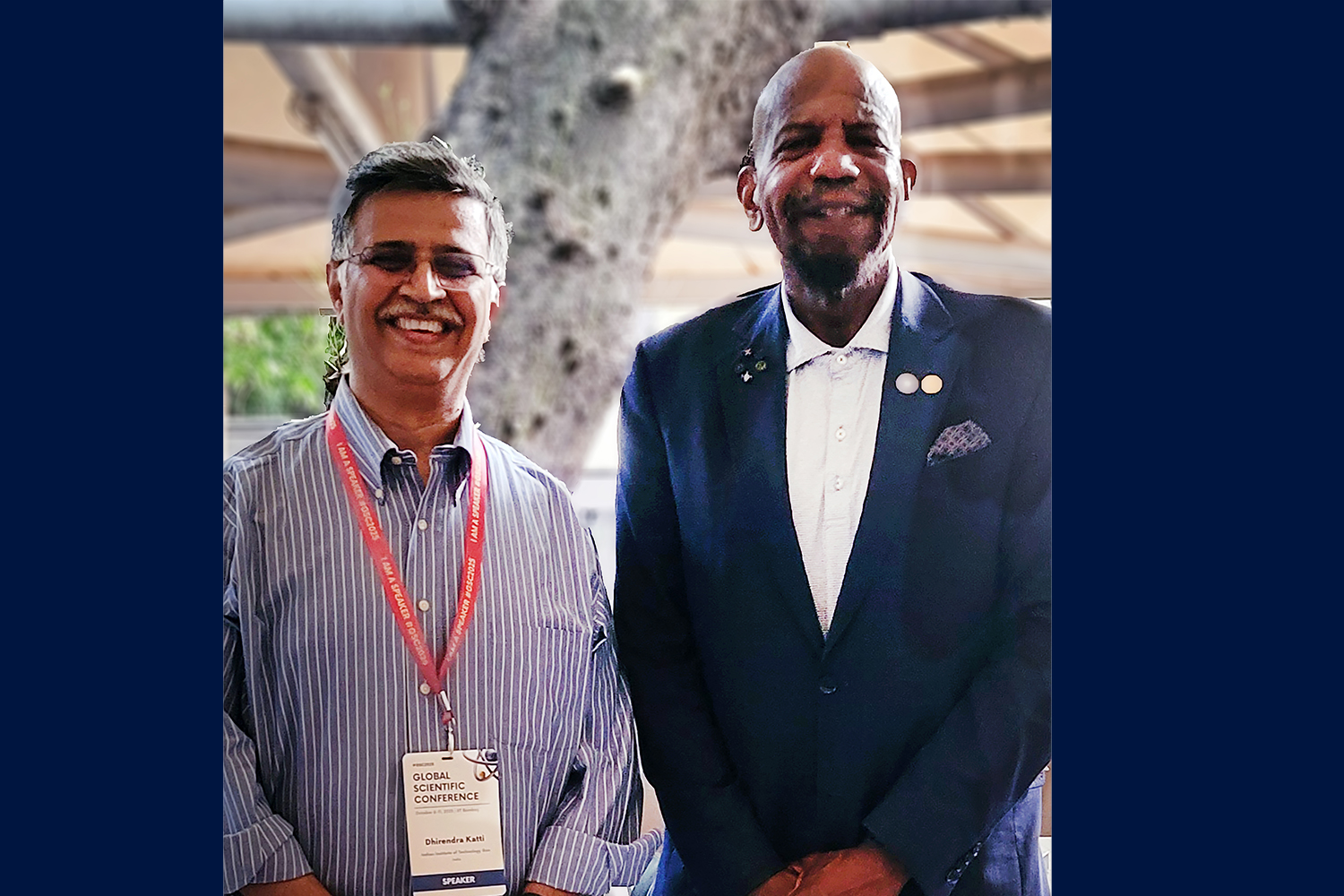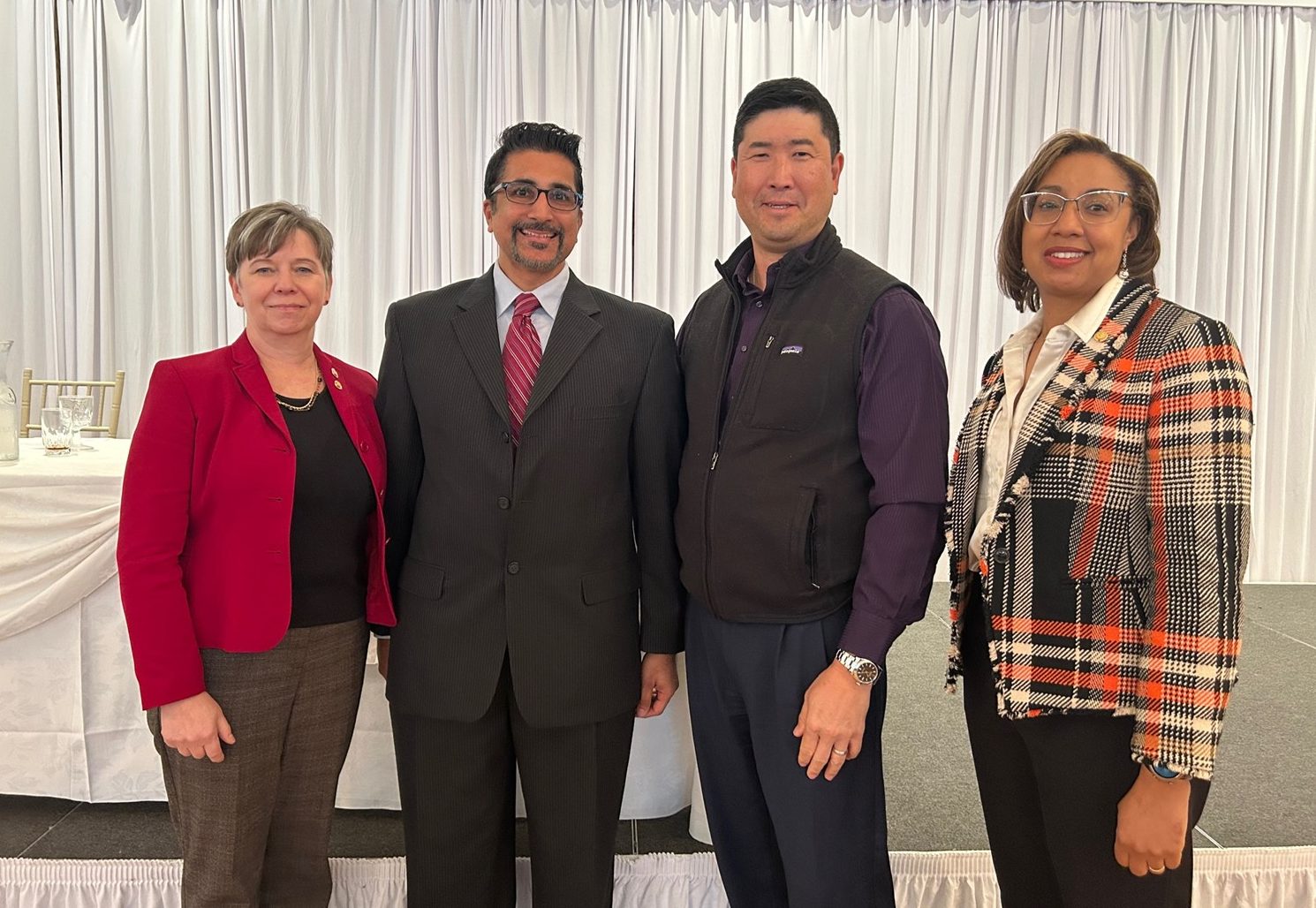 An interdisciplinary team of researchers from UConn and the universities of Florida and Minnesota captured a $750,000 grant from the National Science Foundation to conduct research involving molecular computing. The three-year project is led by principal investigator Dr. Sanguthevar Rajasekaran, director of the Booth Engineering Center for Advanced Technology and the UTC Chair Professor of Computer Science & Engineering. Joining him on the project are fellow UConn professor, Dr. Robert Birge of the Department of Chemistry, Dr. Vipin Kumar (University of Minnesota), and Dr. Sartaj Sahni (University of Florida). UConn will receive $600,000.
An interdisciplinary team of researchers from UConn and the universities of Florida and Minnesota captured a $750,000 grant from the National Science Foundation to conduct research involving molecular computing. The three-year project is led by principal investigator Dr. Sanguthevar Rajasekaran, director of the Booth Engineering Center for Advanced Technology and the UTC Chair Professor of Computer Science & Engineering. Joining him on the project are fellow UConn professor, Dr. Robert Birge of the Department of Chemistry, Dr. Vipin Kumar (University of Minnesota), and Dr. Sartaj Sahni (University of Florida). UConn will receive $600,000.
In molecular computing, individual atoms or molecules are used to solve computational problems. The website wiseGEEK.com explains it this way: One kilogram of carbon contains 5 x 1025 atoms. If 100 atoms could store a single bit or perform a computational operation, using massive parallelism, a molecular computer weighing one kilogram could process more than 1027 operations per second. . .With so much greater computational power, we could achieve feats of calculation and simulation unimaginable to us today.
Currently, the world’s fastest supercomputer is the U.S. Department of Energy’s RoadRunner, which reached peak speeds of 1000 trillion calculations per second in June 2008.
The research team will study the capabilities and limitations of protein-based associative memory processors (PBAMPs), one type of molecular computing, relative to digital computers. Dr. Rajasekaran explained that computational algorithms are limited in part by the lack of optimal memory architectures. Protein-based memory architectures provide for three-dimensional storage as well as associative processing, and they offer the advantages of being reusable and ecological as well as the capacity to store large amounts of data in a small volume of the memory medium.
Dr. Rajasekaran explained that in law enforcement, photos or fingerprints from crime scenes are often matched against databases of photos or fingerprints of known criminals. The process takes a massive degree of parallelism to complete quickly. “With PBAMPs, this parallelism and image (fingerprint) matching can potentially be done in real time. In fact, prototype PBAMPs are already being used for matching fingerprints and other images,” he remarked.
 The technology can be enormously useful in any application for which processing speed and size are desirable, from health care to defense. Say doctors wish to identify patients who may have had a tumor similar to one they have detected in a new patient. “When a new patient is diagnosed with cancer, his/her scan becomes a query, and we want to find the closest matching tumors in a database of CT/MRI/FMRI scans. Such matches will provide hints on diagnosis and treatment,” Dr. Rajasekaran said. The same capabilities may be used to locate particular sequences of DNA quickly and effectively within massive databases.
The technology can be enormously useful in any application for which processing speed and size are desirable, from health care to defense. Say doctors wish to identify patients who may have had a tumor similar to one they have detected in a new patient. “When a new patient is diagnosed with cancer, his/her scan becomes a query, and we want to find the closest matching tumors in a database of CT/MRI/FMRI scans. Such matches will provide hints on diagnosis and treatment,” Dr. Rajasekaran said. The same capabilities may be used to locate particular sequences of DNA quickly and effectively within massive databases.
Dr. Rajasekaran and his colleagues will build their PBAMP using a conventional (sequential or parallel) machine in conjunction with protein-based memories. He observed that the challenge will be to build the right interface between the memory and the processor(s). In collaboration with his co-investigators, Dr. Rajasekaran has already solved one long-standing open problem: protein based memories require that on any “page” of memory, the number of zeros must equal (or nearly) the number of ones. This restriction has been eliminated through a novel coding scheme that removes the equal numbers constraint.
For the new project, Dr. Rajasekaran’s efforts will center on the development of algorithms and a parallel model, while Dr. Birge will design variants of the bacteriorhodopsin (bR) protein, the particular protein they will use in their work. Drs. Sahni and Kumar will work on parallel algorithms and models, and on data mining and other applications, respectively.


